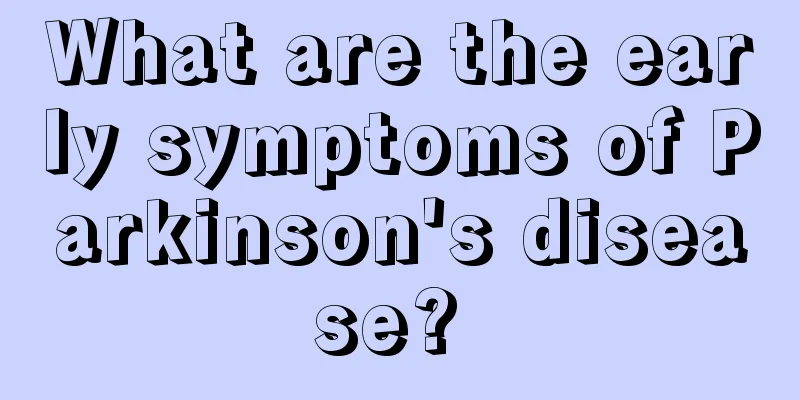What are the early symptoms of Parkinson's disease?

|
Parkinson's disease is a common disease in daily life, which often occurs in middle-aged and elderly people. It has a great impact on people's normal life and work. Therefore, understanding the early symptoms of Parkinson's disease and achieving early detection and early treatment are very beneficial for treatment. So what are the early symptoms of Parkinson's disease? Most people don't quite understand this. In fact, Parkinson's disease has four early symptoms. The first early symptom is resting tremor. 1. Resting tremor. Tremor is often the earliest symptom of the disease, usually with unilateral finger pill-rolling movements, which will later develop into involuntary rhythmic tremors of the ipsilateral lower limb and the contralateral limb when at rest. The symptoms may be alleviated or stop when changing position or moving. Tremors can worsen with emotional changes. 2. Muscle stiffness. In the early stage, it usually starts from one side of the limb, and the patient feels joint stiffness and muscle tightness. When the facial muscles are affected, a "mask face" with a stiff expression will appear; when it affects the flexion of the trunk, limbs and knee joints, a "triple-bend posture" will occur. 3. Slow movements. In the early stages, patients' fine motor skills in their upper limbs slow down. Actions such as tying shoelaces and buttoning clothes become much slower than before, or even impossible to complete successfully. Writing also gradually becomes difficult, the handwriting becomes crooked, and the writing becomes smaller and smaller, which is called "micrographia". It is difficult to start walking. Once you start walking, your body leans forward, your steps are small and get faster and faster, and you cannot stop in time, which is called a "panicked gait." When walking, the coordinated swing of the upper limb on the affected side is reduced or even disappears; turning around is difficult and requires taking several small steps in succession. 4. Combined with other symptoms. Sometimes patients also experience symptoms such as decreased speech and a deep, monotonous voice, difficulty swallowing, drooling, sleep disorders, depression, or dementia. |
<<: What kind of disease is Parkinson's?
>>: What causes nausea and vomiting?
Recommend
How to prevent breast cancer? If you want to prevent breast cancer, you need to pay attention to these 4 eating habits
Mothers are one of the high-risk groups for breas...
What are the effective ways to get rid of bad tooth odor?
Many people have bad breath to some extent. Gener...
Experts briefly analyze the symptoms of intestinal cancer in different parts of the body
Intestinal cancer is a malignant tumor that can o...
What to do for laryngeal cancer and what to eat
As the name suggests, laryngeal cancer is cancer ...
What can cover a tattoo?
Many young people have the habit of getting tatto...
Can the body withstand 25 radiotherapy sessions for rectal cancer?
Holding on refers to whether the body can bear it...
What diseases does milky white urine signal?
I woke up in a daze in the morning, feeling the u...
What are some tips for treating lip blisters and ulcers
Many people often experience symptoms of lip blis...
Is renal hamartoma dangerous and can it be cured?
Renal hamartoma is a benign tumor that is usually...
Experts introduce the main causes of esophageal cancer
Esophageal cancer seriously affects people's ...
What are the common types of lung cancer? These symptoms of lung cancer seem to have nothing to do with cancer
With the improvement of living standards, many pe...
Pathological changes of rectal tubular adenoma
Rectal tubular adenoma is a benign tumor of gland...
Save the 4 major health crises in summer
Summer seems to be a combination of angels and de...
Do all breast cancer patients need chemotherapy?
Do all breast cancer patients need chemotherapy? ...
Why can alcohol be used for disinfection
We all know that alcohol has another function, wh...









